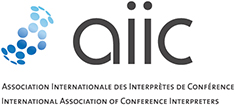Resources

Guidelines for SLI Working in Mixed Teams

Guidelines for spoken language interpreters working in mixed teams
Spoken language interpreters interpret between spoken languages. Sign language interpreters interpret between a spoken and a signed language or between signed languages.
These guidelines cover situations where spoken and sign language interpreters are working together in a mixed team.
1. Sign language
Sign languages are languages that have evolved in much the same way as and have similar linguistic properties to spoken languages. There is no one universal sign language; in fact some countries have more than one sign language or dialect. However, an auxiliary language often referred to as International Sign (IS) has developed for use at international gatherings. While it is not a fully-fledged language, it is a communication solution when having to provide for a diverse audience. It is not intended to replace national sign languages, but can be an acceptable solution at European and international level meetings and events.
2. Training and Qualifications
Sign language interpreters are trained to interpret between the national sign language and spoken language of the country in which they work and live. Each European country has a different qualification and registration system for sign language interpreters, and other countries around the world also have their own systems(3). A sign language interpreter is bound by a Code of Ethics, ensuring impartiality, confidentiality, linguistic and professional competence, as well as professional growth and development.
3. Working as a mixed team of sign and spoken language interpreters
Sign language interpreters interpret between spoken language(s) and sign language(s). The sign language interpreter interprets into a national sign language or international sign, depending on the language requested.
When working into a spoken language the sign language interpreter provides relay for the spoken language interpreters, and may need to take relay from their spoken language colleagues. Sign language interpreters form part of the interpreting team.
Before the meeting starts, the Head of Team should ensure that all team members know about these relay arrangements, particularly if not indicated on the team sheet. Other items worth touching on are the positioning of the sign language interpreters and that the whole team will have the same breaks. If necessary, the team leader should make these points clear to the Chair.
When the Head of Team signals that the session has ended for the interpreters, this includes the sign language interpreters.
4. Where to position sign language interpreters
Sign language interpreters do not work in the booth like spoken language interpreters. They work in the meeting or conference room, close to where the speakers are, and positioned so that the deaf participants can see them. The sign language interpreters need to be placed so that the deaf participant can see the interpreter as well as the speakers. The sign language interpreters use headphones, to ensure they can hear the spoken language interpreters from whom they may be taking relay, and a hand-held microphone, so that they can be heard when they are providing relay.
Download Guidelines for Spoken Language Interpreters Working in Mixed Teams
Date Posted: August 09, 2023

